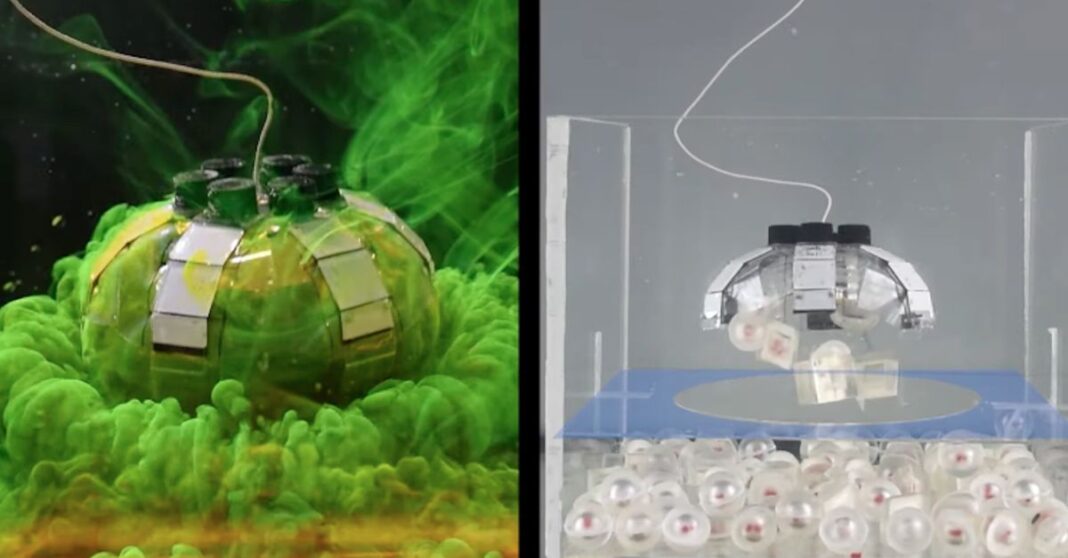Water pollution continues to plague the sea beds with plastic waste, and while numerous solutions have been proposed, many of them harm existing marine life or affect the efficiency of surface skimmers that glide over the surface of the ocean to remove trash.
In response to such challenges, scientists from the Max Planck Institute for Intelligent Systems (MPI-IS) in Stuttgart, Germany have taken inspiration from one of the ocean’s oldest inhabitants – the jellyfish – in their quest for a solution.
The team at MPI-IS has created a jellyfish-like robot that is versatile, energy-efficient, and nearly noise-free, measuring just the size of a hand. Hyeong-Joon Joo from the Robotic Materials Department emphasizes the significance of this invention, saying, “70% of marine litter is estimated to sink to the seabed, with plastics accounting for over 60% of this waste.”
The robot operates through six electrohydraulic actuators, functioning as artificial muscles that power its movements. These muscles, known as HASELs (hydraulically amplified self-healing electrostatic actuators), are essentially liquid-filled plastic pouches covered partially by electrodes. A power supply intermittently delivers electricity through thin wires, causing the muscles to contract and expand. This mechanism allows the robot to move gracefully, creating swirls beneath its body, similar to how a jellyfish generates currents as it moves.
Tianlu Wang, a postdoc in the Physical Intelligence Department at MPI-IS and the first author of the publication that discusses the invention, explains that it functions, “Just like how a jellyfish can trap objects along its path as it creates currents around its body.”
This unique capability enables the jellyfish-like robot to trap objects without physical contact, making it suitable for operating alone or in collaboration with multiple units. Furthermore, the robot requires minimal power input and poses no harm to humans or fish if its polymer outer layer were to break.
One of the challenges that the scientists encountered while testing was the robot’s reliance on a wire for operation. Hyeong-Joon Joo remarks, “At this point, our Jellyfish-Bot needs a wire. This is a drawback if we really want to use it one day in the ocean.”
However, the team managed to demonstrate its trash-collecting capabilities by deploying two Jellyfish-bots to pick up a mask. While the ability to work in tandem and carry heavy loads is promising, the usage of wires remains a hindrance to their application in the ocean.
Despite the current drawback, the scientists at MPI-IS have made progress in steering the robot. By attaching a buoyancy unit, a battery, and a microcontroller to the robot, they were able to successfully navigate it in the pond at the Max Planck Stuttgart campus. However, achieving wireless control to change its direction and swim in reverse still poses a challenge, noted Tianlu Wang.
The development of this jellyfish-like robot offers hope in the fight against the ever-increasing ocean waste. As scientists refine and overcome its current limitations, this innovative solution has the potential to contribute significantly to the cleanup of our oceans, ultimately preserving marine ecosystems for future generations.



